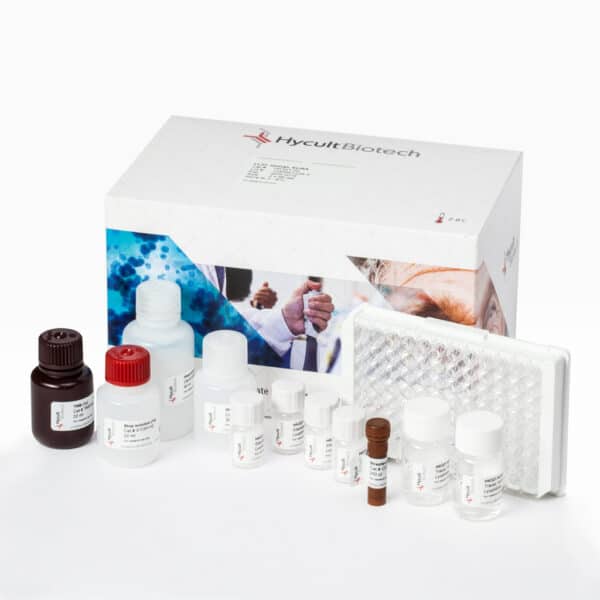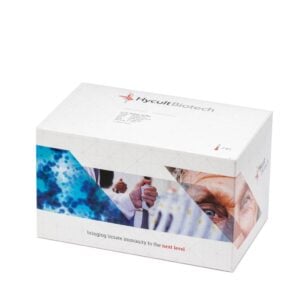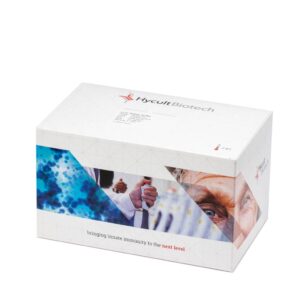S100A7, Human, ELISA kit
S100A7 (psoriasin) is a 11.4kDa member of the S100 gene family, which are EF-hand Ca 2+-binding proteins.
Read more€756.00 – €1,223.00
S100A7 (psoriasin) is a 11.4kDa member of the S100 gene family, which are EF-hand Ca 2+-binding proteins. They are involved in a broad range of intra- and extracellular processes like regulation of calcium homeostasis, cell proliferation, differentiation, apoptosis, immune responses, antimicrobial activity, chemotaxis and inflammation. S100 proteins have a fundamental structural unit which is a highly integrated dimer, some as homodimer and others as heterodimer. S100A7 functions as a homodimer and binds two Zn2+ ions. These ions stabilize the dimer and mediate the function of S100A7 during infection. Extracellular S100A7 functions as a DAMP during infection. S100A7 limits bacterial infection through metal limitation. Furthermore, S100A7interacts with RAGE which drives an NF-B mediated proinflammatory response and recruitment of neutrophils.
S100A7 was first discovered as a protein abundantly expressed in psoriatic keratinocytes. Psoriasis is considered a disease of dysregulated epidermal hyper proliferation and inflammation, initiated by multiple mechanisms of the immune system. Possibly, S100A7 adheres directly to and reduces survival of pathogens found on the epidermis and acts as a physical barrier. Originally S100A7 was called a biomarker for psoriasis, but is also find in other skin diseases like atopic dermatitis. Therefore, the protein seems to be a major player in the local innate defense of the skin. Furthermore, S100A7 seems to be involved with breast cancer and squamous cell carcinoma. In vitro it was found to confer a more aggressive behavior.
It is strongly recommended to wear gloves. Please be aware the assay is sensitive for any skin or hair flakes: this can give false positive results.
- The efficient format of a plate with twelve disposable 8-well strips allows free choice of batch size for the assay.
- Samples and standards are incubated in microtiter wells coated with antibodies recognizing Human S100A7.
- Biotinylated tracer antibody will bind to the captured Human S100A7.
- Streptavidin-peroxidase conjugate will bind to the biotinylated tracer antibody.
- Streptavidin-peroxidase conjugate will react with the substrate, tetramethylbenzidine (TMB).
- The enzyme reaction is stopped by the addition of oxalic acid.
- The absorbance at 450 nm is measured with a spectrophotometer. A standard curve is obtained by plotting the absorbance (linear) versus the corresponding concentrations of the Human S100A7 standards (log).
- The Human S100A7 concentration of samples, which are run concurrently with the standards, can be determined from the standard curve.
You may also like…
-
View product €825.00 – €1,359.00
-
View product €825.00 – €1,359.00



